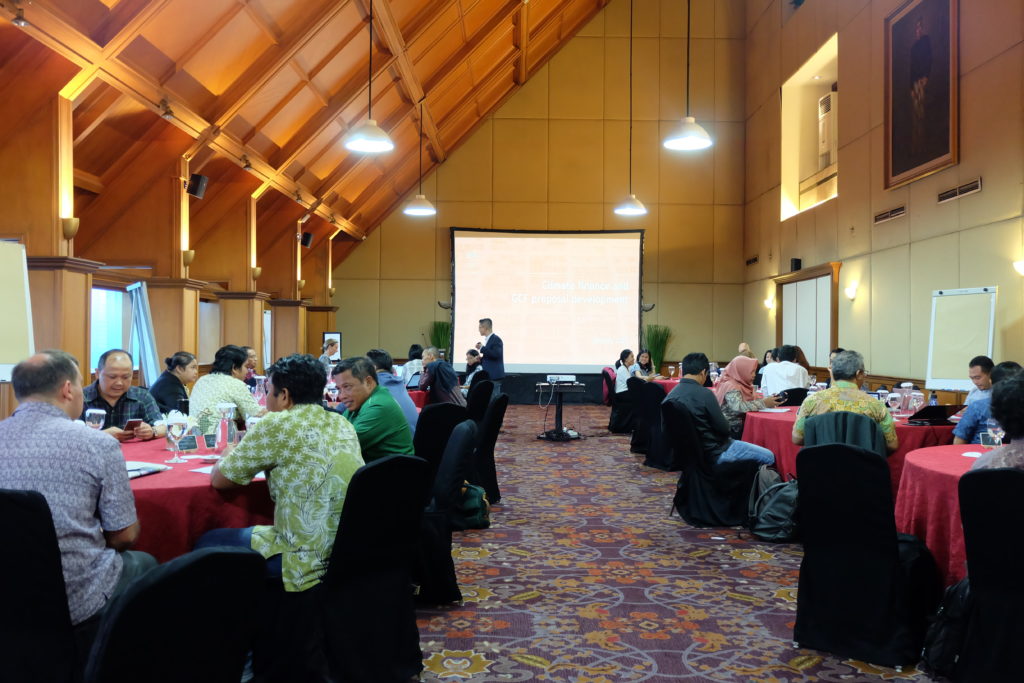What is the GCF looking for when it comes to co-finance?
6 April 2020, Alexandra Milano, Category: All insights, News, Tags: Capacity building, co financing, gcf, GGGI, GGGI Indonesia, Indonesia, Training

E Co. attempted to answer this (literal) million dollar question last month in a webinar hosted for local stakeholders in Indonesia. As part of an ongoing assignment for the Global Green Growth Institute (GGGI), E Co. CEO Grant Ballard-Tremeer and Consultant Alex Milano shared insights into co-financing for GCF projects with stakeholders in Indonesia. The hour-long session covered a number of topics, including what factors influence these ratios, what exactly constitutes co-finance, possible sources of co-finance, and offered hypothetical figures based on analysis of the GCF’s investment portfolio.
The “ideal” co-financing ratio is an elusive figure—the GCF provides only loose guidance on the ratio it expects to projects to meet. As E Co. found in GCF insight #5, co-financing is a significant challenge for stakeholders who reported feeling confused and frustrated by the ambiguity surrounding co-finance. The GCF also faces criticism that expected levels of co-finance are too high.
Our most recent publication, GCF insight #14, also revealed more stakeholder challenges related to co-financing:
“Obtaining co-financing was another challenging aspect of project financing, flagged by various stakeholders. The limited capacity of NDAs and environmental ministries was mentioned as a barrier to the identification and structuring of appropriate project co-financing. Experiences from Caribbean and Southern Africa highlighted that seeking government co-finance has been challenging due to the lack of awareness of GCF opportunities and requirements.”
Read the rest of our GCF insight #14 on Project financing here.
E Co. presented figures derived from its own analysis of approved projects. Estimated ratios were provided based on a project type, project size and entity type. These factors and others influence the expected level of co-finance in GCF projects. For example, a micro-sized, public sector adaptation project submitted by a direct access entity will likely not be expected to have as much co-finance as a medium-sized, private sector, mitigation project put forth by an international accredited entity.
More than 50 participants attended the webinar and following the presentation there was a lively Q&A and discussion session. Attendees included local government officials, NGOs and local private sector actors who had previously participated in project design trainings given in an earlier phase of the assignment. You can read more about this here.
Would you like to learn more about our training courses? Click here
Alex Milano is the author of our Climate Justice series. Have you read her first article on ‘The role of climate finance in climate justice’?
Join the conversation by posting a comment below. You can either use your social account, by clicking on the corresponding icons or simply fill in the form below. All comments are moderated.